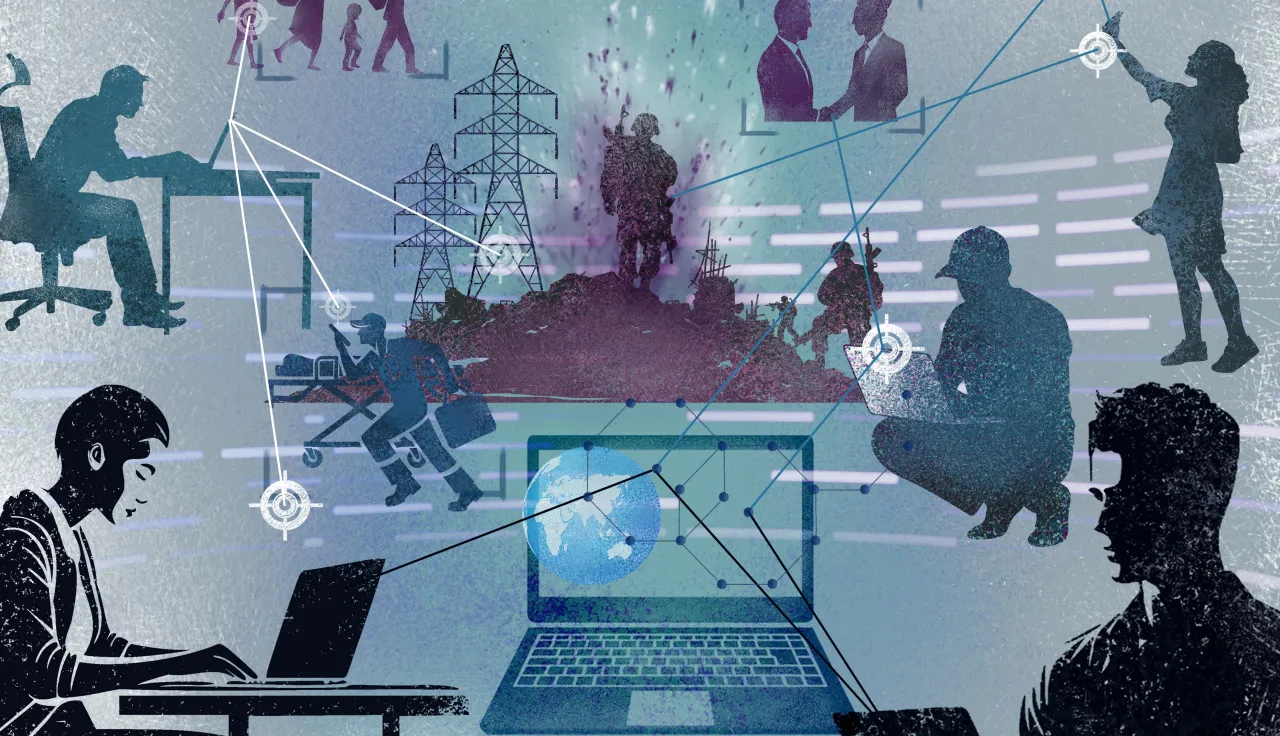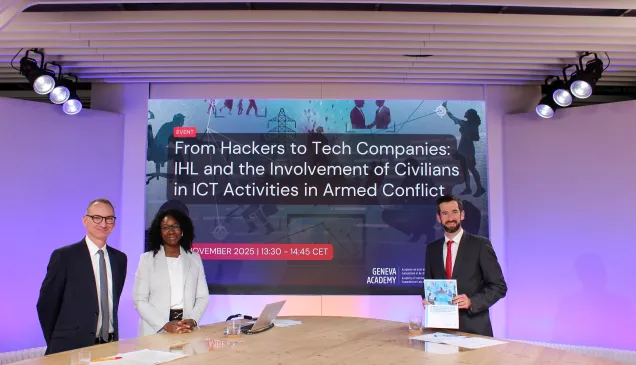Civilian Involvement in Digitalizing Armed Conflicts

Recent armed conflicts have seen civilians encouraged to collect militarily-relevant information through smart-phone; unprecedented numbers of civilian hacker groups (often referred to as “hacktivists”) conducting cyber operations against perceived enemies; and technology companies providing services and infrastructure to belligerents, at times unaware of the risks this may expose company assets, staff, and customers. This trend has serious implications for the safety of civilians during armed conflict, and poses pressing legal questions.
As part of a joint initiative on the Digitalization of Conflict: Humanitarian Impact and Legal Protection by the International Committee of the Red Cross (ICRC) and the Geneva Academy of International Humanitarian Law and Human Rights, extensive research and consultations with experts from all regions of the world were carried out to examine how international humanitarian law applies to civilian involvement in cyber and other digital activities during armed conflicts.
As a result of this research project, the ICRC and the Academy have written a joint report, which addresses
- pressing legal questions, such as the protection of civilians and tech companies during armed conflict, as well as the risk of losing such protections;
- the international humanitarian law obligations of civilians, especially hackers, when taking part in armed conflict;
- the international humanitarian law obligations of states to protect civilians and civilian objects against the dangers of armed conflict, and to ensure respect for IHL by civilian populations under their control.
The report presents practical proposals for states, technology companies, and humanitarian actors to limit civilian involvement, reduce harm, and prevent violations of IHL.



